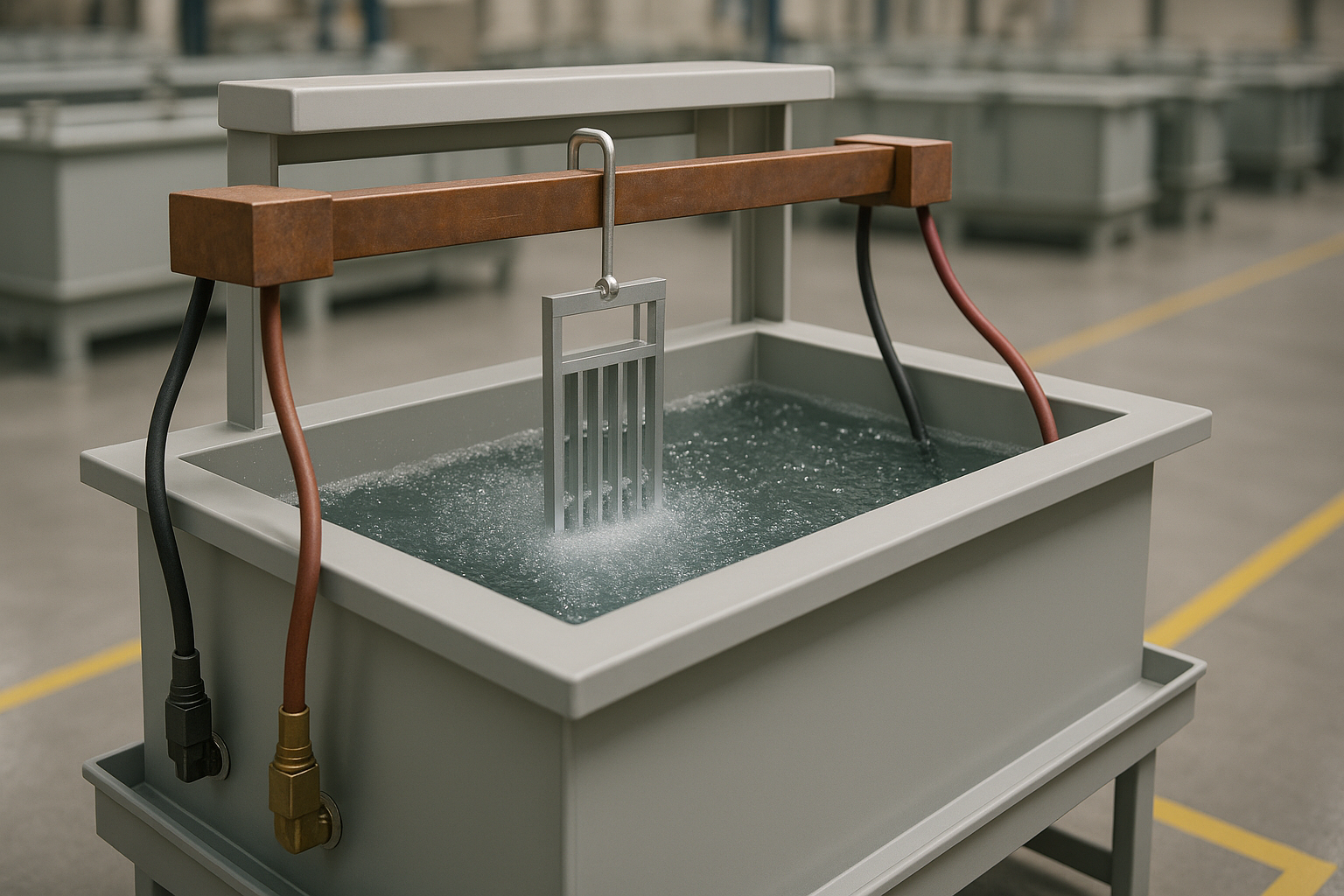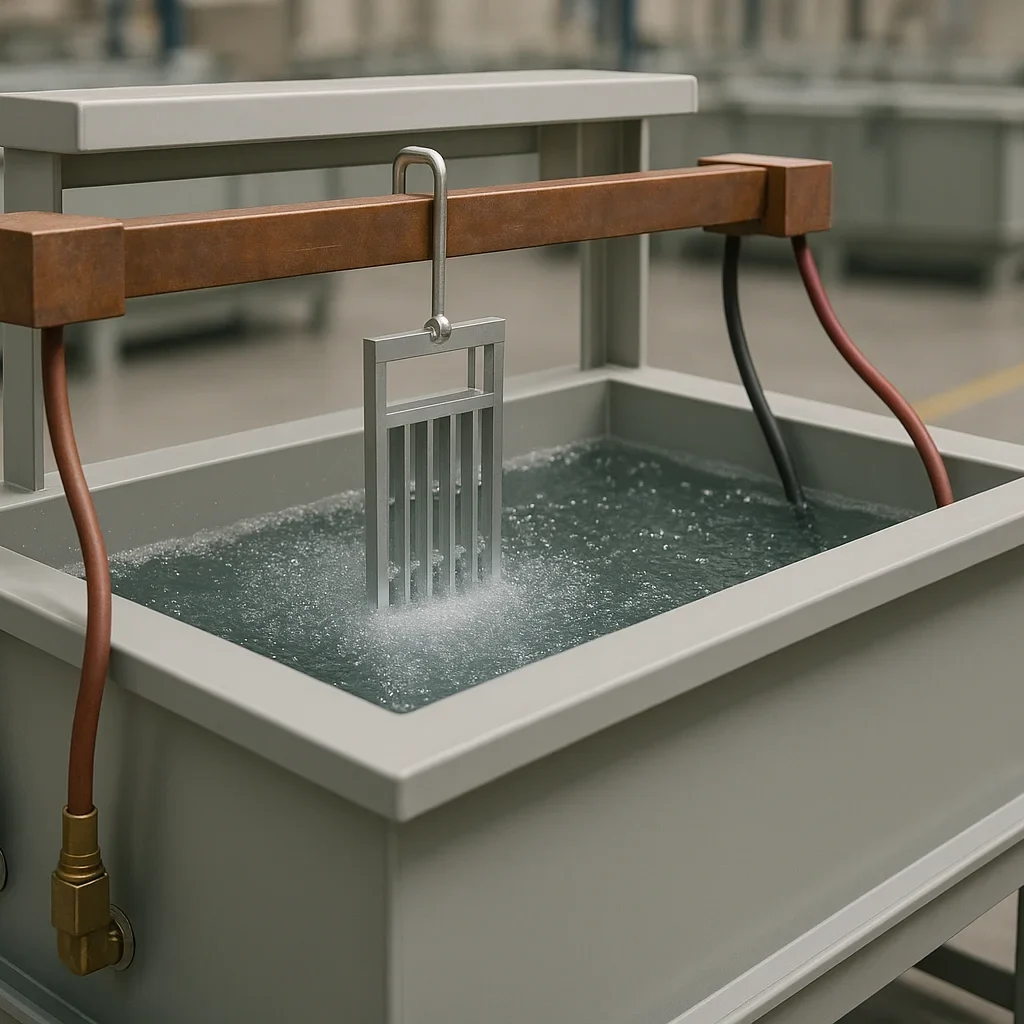

Anodizing Service
NEXAMS Leading the Way in Anodizing Service for Durable and Aesthetic Metal Finishing Solutions
Anodizing is an advanced electrochemical surface treatment that strengthens the natural aluminum oxide layer on metals, improving anodizing corrosion resistance, surface hardness, and visual appeal. At NEXAMS, we take an empathetic and ethical approach to every project, partnering with trusted Vendors, skilled Suppliers, and experienced Manufacturers to ensure our anodizing service is not only technically precise but also aligned with responsible decision-making. This cooperative model allows us to provide consistent quality while maintaining strong Support networks, often utilizing local or nearby facilities to optimize lead times and communication.
We specialize in anodizing sulfuric acid anodizing processes to deliver high-quality surface finishes with exact anodizing color matching, guaranteeing that anodized aluminum components have uniform and vibrant tones. Our anodizing quality control method covers every stage—surface preparation, controlled anodizing anodizing time, and thorough anodizing process documentation—ensuring that each part meets rigorous standards and industry compliance. Working closely with Suppliers who share our ethical values, we enhance extruded aluminium and aluminium profiles through hard anodizing, anodizing type iii process, and phosphoric anodizing, all while integrating coating services like chrome plating, nickel plating, and silver plating for versatility.
By leveraging collaborative efforts between Manufacturers and Vendors, NEXAMS ensures anodizing aluminum finishing meets both performance and design expectations. Whether it’s colour anodizing for consumer electronics or yellow anodizing and matte anodizing for industrial machinery, our teams provide end-to-end Support to deliver results that satisfy both functional and aesthetic needs.
Benefits of Anodizing Service
Enhanced anodizing corrosion resistance through precise aluminum oxide layer control, achieved with the input of skilled Suppliers.
Durable anodized surfaces that resist wear, designed in collaboration with reliable Vendors and Manufacturers.
Accurate anodizing color matching for consistent appearance across components.
Robust anodizing quality control method for maximum reliability, with strong Support during production.
Superior finishes for extruded aluminium and aluminium profiles using anodizing type iii process, often sourced from local partners.
Functional and decorative coatings via chrome plating, silver plating, and nickel plating from vetted Suppliers.
Precise anodizing anodizing time control for uniform coatings.
Diverse options including colour anodizing, yellow anodizing, and matte anodizing, coordinated with nearby Vendors.
Industrial Applications and Use Cases
Automotive: Trims, panels, and wheels anodized for corrosion resistance and appeal, manufactured in partnership with local Suppliers.
Aerospace: Lightweight anodized aluminum parts for strength and wear resistance, supplied by qualified Vendors.
Electronics: Anodized enclosures and heat sinks ensuring insulation, coordinated with Manufacturers for precision.
Architecture: Aluminium anodising for facades and panels, with ongoing Support from Suppliers.
Consumer Goods: Durable finishes with anodizing color matching from trusted Vendors.
Marine Industry: Hard anodizing for marine fittings, handled by nearby Manufacturers.
Medical Devices: Anodized aluminum finishing for surgical tools with help from local partners.
Industrial Machinery: Chrome plating and nickel plating integrated into anodizing workflows for durability.
Materials Used in Anodizing Service
Aluminum and Aluminum Alloys – Primary substrates processed by skilled Suppliers.
Anodized Aluminum – Produced via sulfuric acid anodizing and hard anodizing, often in local facilities.
Extruded Aluminium – Enhanced through anodizing aluminum finishing with Vendor collaboration.
Aluminium Profiles – Customized finishes provided by specialized Manufacturers.
Silver Plating – Added post-anodizing for decoration and conductivity from trusted Suppliers.
Chrome Plating – For heavy-duty applications, managed by experienced Vendors.
Nickel Plating – Provides added corrosion resistance.
Aluminum Oxide Layer – Protective barrier created during the anodizing process.
Phosphoric Anodizing Coatings – Improves paint adhesion in architectural applications.
How Costing Works in Anodizing Service
The costing is tailored based on part volume, substrate type, anodizing anodizing time, and desired finish. Our anodizing process documentation ensures transparency, giving both Vendors and Suppliers confidence in pricing accuracy. Services like hard anodizing, silver plating, chrome plating, and nickel plating are priced with full clarity, considering both material costs and corrosion resistance goals. By engaging local Manufacturers where possible, we reduce shipping time and improve Support availability.
Alternative Technical Suggestions
Sulfuric Acid Anodizing – Common method for decorative and corrosion-resistant results.
Phosphoric Anodizing – Enhances paint adhesion for aluminum oxide surfaces.
Hard Anodizing – Thick coatings for heavy-duty parts.
Electrolytic Coloring – Durable finishes via metal salt deposition.
Hybrid Coating – Combines anodizing with chrome or silver plating, executed by experienced Manufacturers.
Dye-Based Colour Anodizing – Custom colors to match branding.
Matte Anodizing Finishing – Low-gloss surfaces for refined aesthetics.
FAQs
Q: What is the difference between sulfuric acid anodizing and phosphoric anodizing?
A: Sulfuric acid anodizing provides strong corrosion resistance and coloring flexibility, while phosphoric anodizing is mainly for paint adhesion, often recommended by Suppliers for architectural use.
Q: How does type iii anodizing differ from standard anodizing?
A: Type iii, or hard anodizing, creates thicker coatings for extreme wear resistance, preferred by industrial Vendors and Manufacturers.
Q: Why is process documentation important?
A: It ensures traceability and compliance, providing detailed quality records to clients and Suppliers.
Q: Can color matching achieve metallic finishes?
A: Color anodizing offers uniform shades, but metallic effects like chrome or silver plating require additional coating services from specialized Vendors.
Q: Advantages of anodized aluminum in automotive parts?
A: Lightweight, corrosion-resistant, and visually appealing—produced with Support from automotive-focused Manufacturers.
Q: Difference between matte and gloss finishes?
A: Matte reduces glare and fingerprints, while gloss reflects more light—both achievable with precise anodizing anodizing time control.
Q: Role of aluminium anodising in architecture?
A: Improves durability and aesthetics of aluminium profiles, often handled by local Suppliers.
Q: How does nickel plating complement anodizing?
A: Adds wear resistance and hardness, making components more robust, a common choice among Vendors.
Q: Can finishes be customized for industries?
A: Yes, from aerospace-grade hard anodizing to consumer electronics colour anodizing, tailored with the help of expert Manufacturers.
Q: Typical lead time?
A: Usually 3–7 working days, with faster options available via nearby Suppliers for urgent orders.
A: By Sea: Asia: 15–20 days, Europe: 25–35 days, North America: 30–40 days, South America: 35–45 days, Middle East: 14–18 days, Africa: 20–28 days, Oceania: 22–30 days
By Air: Asia: 1–3 days, Europe: 3–5 days, North America: 4–6 days, South America: 5–7 days, Middle East: 1–2 days, Africa: 3–5 days, Oceania: 4–6 days
